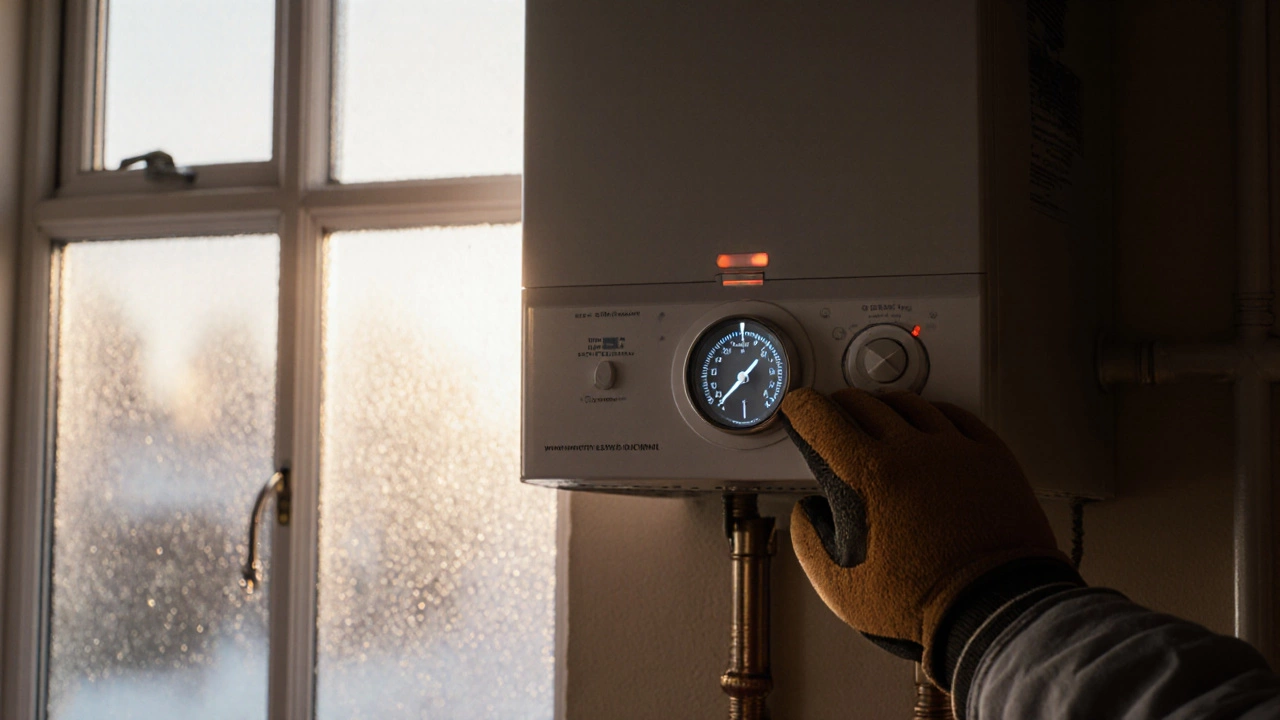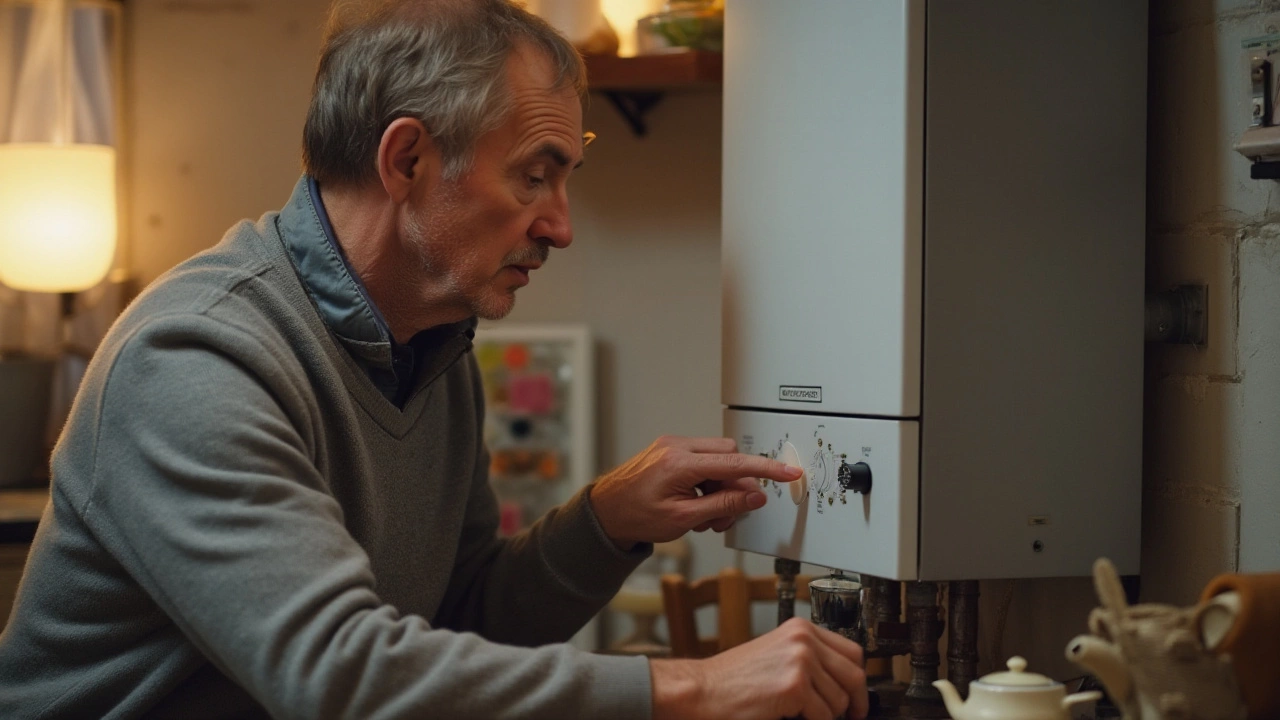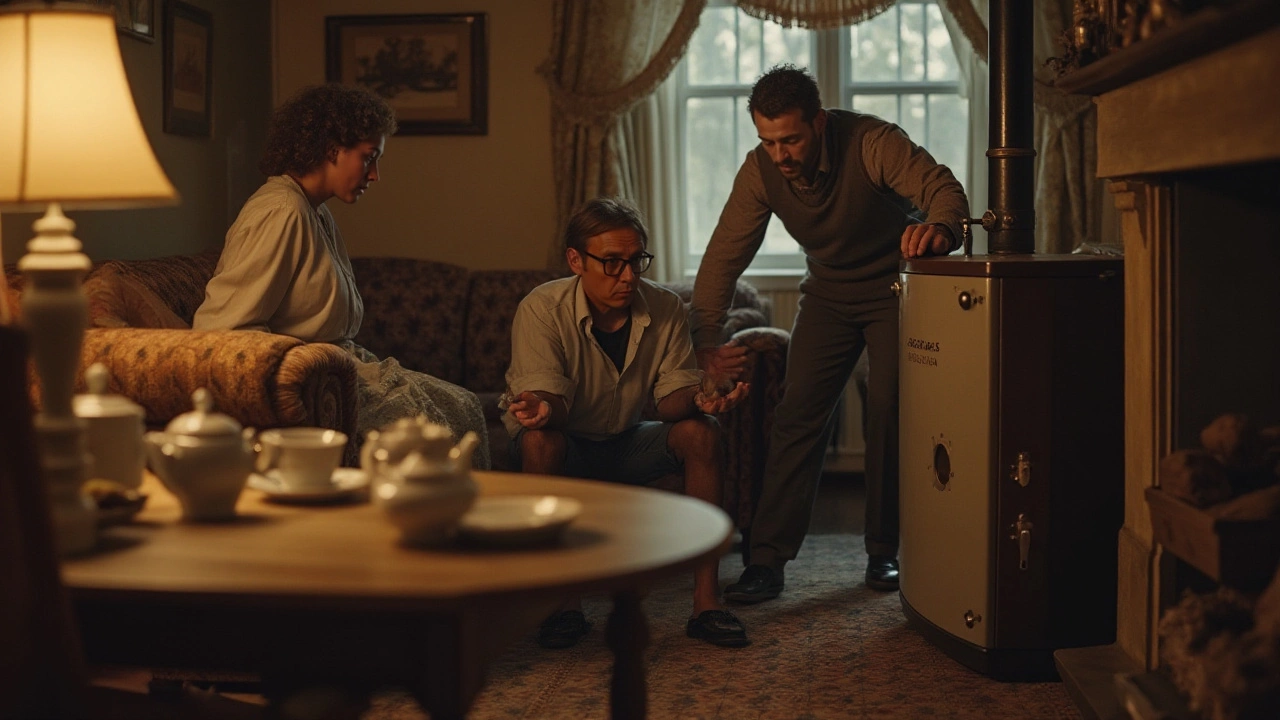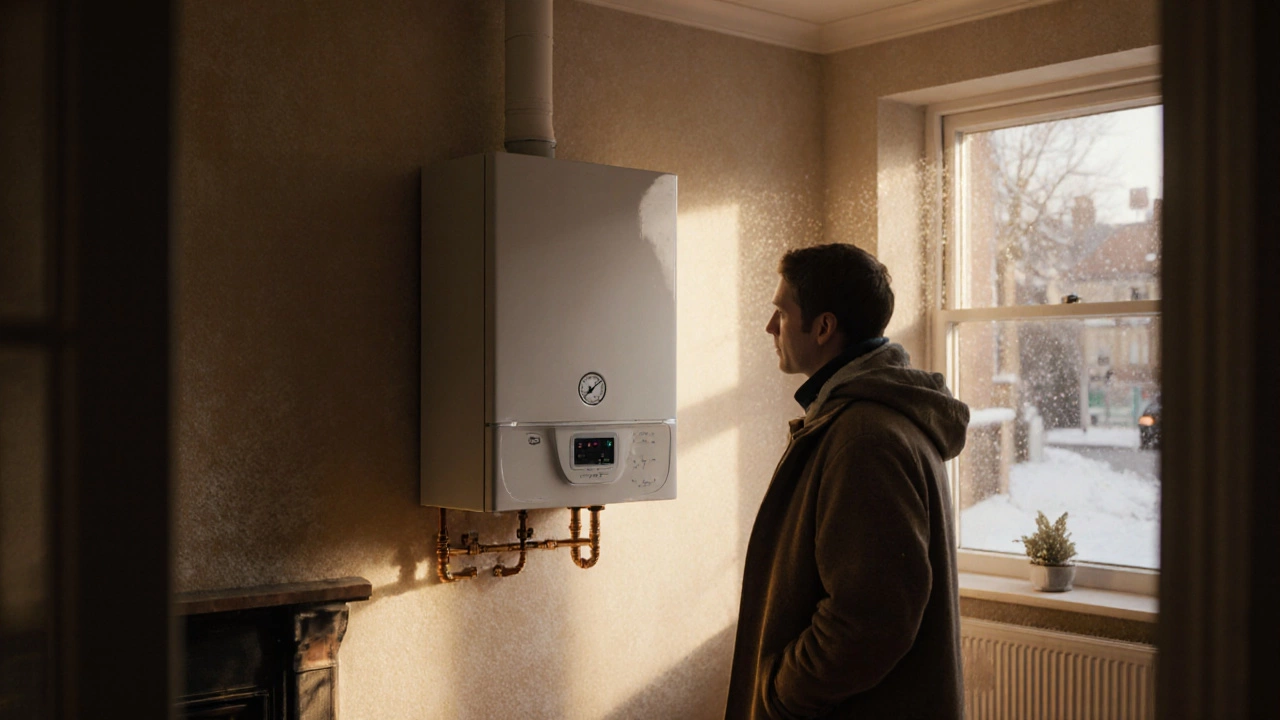
- 13 Oct 2025
- Gideon Thornton
- 0
When it comes to home heating, Boiler is a sealed vessel that heats water for central heating and domestic hot‑water - the heart of the system that keeps your house warm during British winters. The big question many homeowners ask is whether they can roll up their sleeves and perform a DIY boiler service without breaking the law, voiding the warranty, or putting themselves at risk.
What the Law Says About Boiler Servicing
The UK has strict regulations around gas appliances. Under the Gas Safety (Installation and Use) Regulations 1998, any work that involves the gas‑firing components of a boiler must be carried out by a Gas Safe Engineer (formerly CORGI registered). This isn’t a suggestion - it’s a legal requirement. If you tamper with gas‑related parts without certification, you could face hefty fines, insurance problems, or even a criminal record.
Risks of Doing a Full Boiler Service Yourself
Even if you’re handy, a full boiler service touches on three high‑risk areas:
- Gas leaks: A tiny crack in a pipe can lead to carbon monoxide poisoning.
- Combustion efficiency: Incorrect adjustment can cause incomplete burning, wasting fuel and increasing emissions.
- Warranty voiding: Most manufacturers require an annual service by a certified professional to keep the warranty valid.
Because of these risks, most experts advise leaving the core gas‑related checks to a qualified Gas Safe Engineer. However, there are several low‑risk tasks you can safely handle.
DIY Tasks That Are Safe and Useful
As a Homeowner, you can perform routine upkeep that helps the boiler run efficiently and alerts you to potential problems before they become emergencies.
- Check the pressure gauge. Locate the Pressure reading (usually between 1.0 and 1.5 bar when cold). If it’s low, you can top it up using the filling loop - just follow the manufacturer’s instructions.
- Bleed radiators. Cold spots often mean trapped air. Use a radiator key to open the bleed valve, let the hissing air escape, then close it.
- Inspect the condensate pipe. The Condensate Pipe should be clear of blockages and not frozen. A slow‑dripping water test can confirm it’s draining correctly.
- Reset the thermostat. If your thermostat seems off, replace the batteries and ensure it’s set to the correct mode (heating vs hot water).
- Clean the external vents. Dust and debris can restrict airflow. A vacuum brush will do the trick.
These tasks usually take 15‑30 minutes and require only a few basic tools.
Tools and Supplies You’ll Need
| Tool / Supply | Purpose | Typical Cost (GBP) |
|---|---|---|
| Radiator key | Bleeding air from radiators | £5‑£8 |
| Adjustable wrench | Opening filling loop and checking connections | £10‑£12 |
| Vacuum brush | Cleaning vents and condensate pipe | £8‑£15 |
| Carbon monoxide detector | Early warning for gas leaks | £25‑£40 |
| Thermostat batteries | Ensuring accurate temperature control | £2‑£4 |
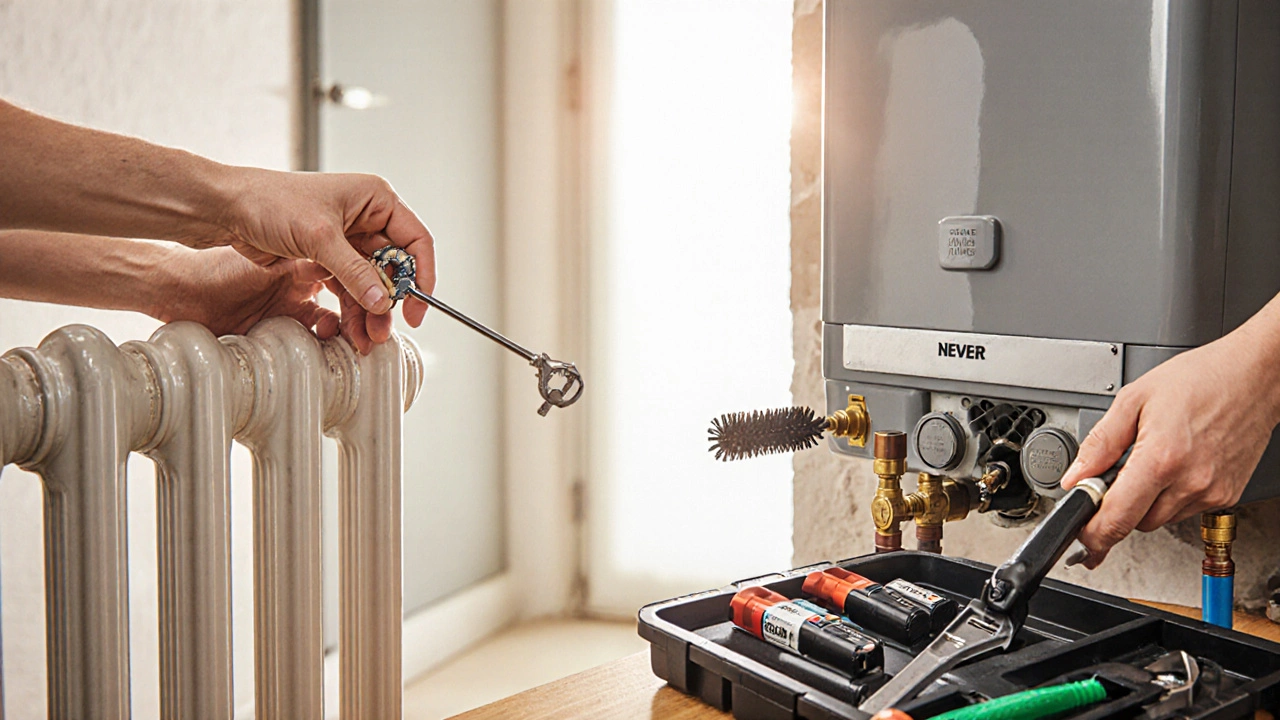
Step‑by‑Step Basic Maintenance Guide
- Turn off the boiler and let it cool for at least 10 minutes.
- Check the Pressure gauge. If it’s below 1.0bar, locate the filling loop, open the valves, and watch the gauge rise to the recommended level. Close the valves and remove the loop.
- Inspect each Radiator. If the top feels cold while the bottom is warm, bleed the radiator using the key.
- Open the condensate pipe’s access point (if it has one) and pour a small amount of water to confirm free flow. Clear any debris with the vacuum brush.
- Remove the thermostat cover, replace batteries, and reset the temperature to your preferred setting.
- Vacuum the external vent grill and check for any obstructed intake.
- Finally, switch the boiler back on and listen for unusual noises. A steady hum indicates normal operation.
If anything feels off - strange noises, error codes on the display, or persistent low pressure - it’s time to call a professional.
When to Call a Qualified Engineer
Even with a diligent DIY routine, some issues are beyond the safe scope of a homeowner:
- Gas smell or suspected leak: Evacuate immediately and contact the National Gas Emergency Service (0800111999).
- Repeated low‑pressure warnings: The boiler may have a faulty pressure‑reducing valve.
- Error codes you can’t interpret: Modern boilers display fault codes that need specialist diagnostics.
- Annual statutory service: Required by law for insurance and warranty compliance.
DIY vs Professional Service: Quick Comparison
| Aspect | DIY Service | Professional Service |
|---|---|---|
| Cost | £0‑£30 (tools & supplies) | £80‑£150 per annual service |
| Legal compliance | Limited - only non‑gas tasks | Fully compliant with Gas Safety Regulations |
| Risk of voiding warranty | High if you tamper with gas components | Warranty remains valid |
| Depth of inspection | Visual checks, pressure gauge, radiators | Combustion analysis, heat‑exchanger check, safety valve test |
| Safety | Safe for basic tasks | Handles hazardous gas work safely |
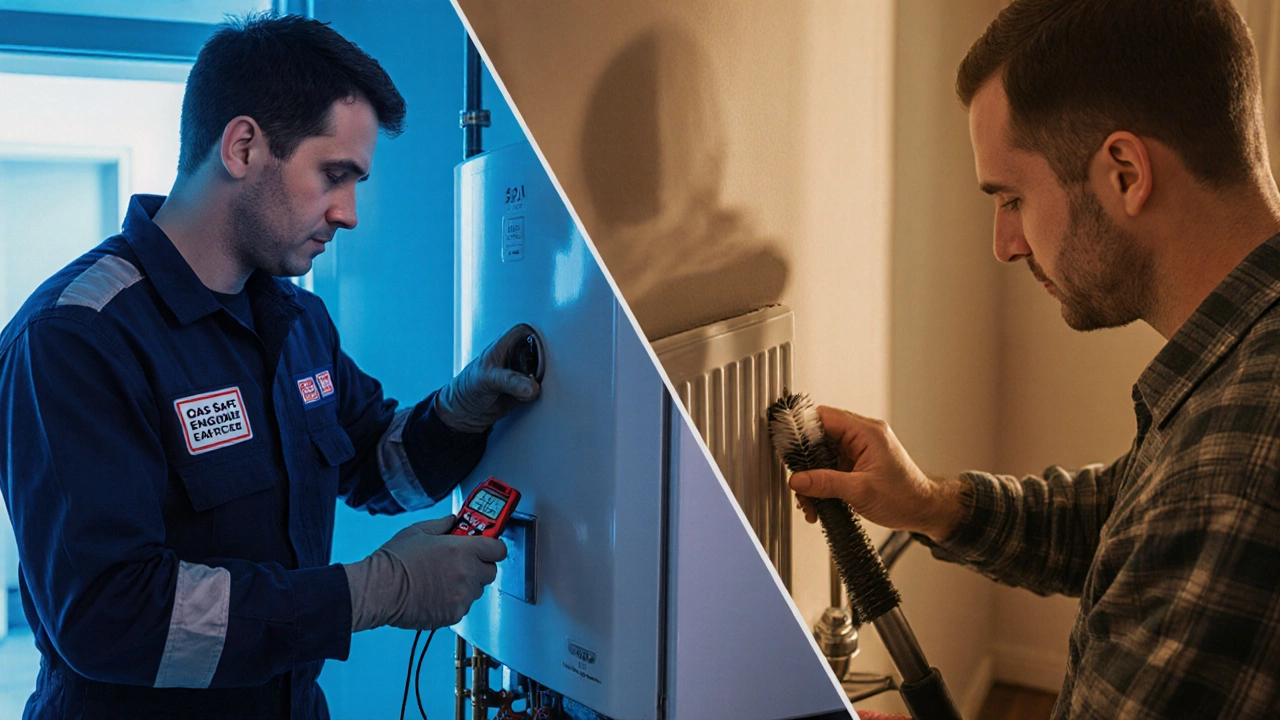
Cost, Warranty, and Peace of Mind
Skipping the professional service can save a few pounds today, but it may cost you much more later. A missed fault can lead to a breakdown in the middle of winter, requiring emergency repairs that can run £300‑£500. Moreover, most manufacturers will refuse warranty claims if the boiler hasn’t received a certified annual service.
Top Safety Tips for Any Boiler Work
- Always turn off the power and gas supply before touching any component.
- Keep a working Carbon Monoxide Detector on each floor.
- Never use open flames or electrical tools near the boiler when the gas is on.
- Maintain good ventilation in the boiler room - at least a 10cm gap around the flue.
- Record the date of each DIY task and the next professional service date.
Quick Takeaways
- Legally, only a Gas Safe Engineer can work on gas‑related parts.
- You can safely handle pressure checks, radiator bleeding, condensate pipe cleaning, and thermostat resets.
- Use the right tools and keep a carbon‑monoxide detector handy.
- Schedule a certified annual service to keep your warranty intact and avoid costly breakdowns.
Frequently Asked Questions
Can I legally service my boiler myself?
No. UK law requires any work involving the gas‑firing components to be carried out by a registered Gas Safe Engineer. You can perform non‑gas tasks such as pressure checks, radiator bleeding, and condensate pipe cleaning.
What are the most common DIY boiler maintenance steps?
Check the pressure gauge, bleed any cold radiators, clear the condensate pipe, reset or replace thermostat batteries, and vacuum the external vent. These steps take 15‑30 minutes and require basic tools.
How often should I call a professional for an annual service?
Every 12 months, or as specified by the manufacturer. An annual service keeps the boiler efficient, ensures legal compliance, and maintains the warranty.
What signs indicate I need a professional repair right away?
Smell of gas, persistent low pressure, error codes you can’t clear, strange banging noises, or the boiler failing to ignite. In any of these cases, shut off the gas and contact a Gas Safe Engineer immediately.
Will doing DIY tasks affect my boiler’s warranty?
Most manufacturers require a certified annual service to keep the warranty valid. Performing only non‑gas tasks won’t usually void the warranty, but tampering with gas components certainly will.


